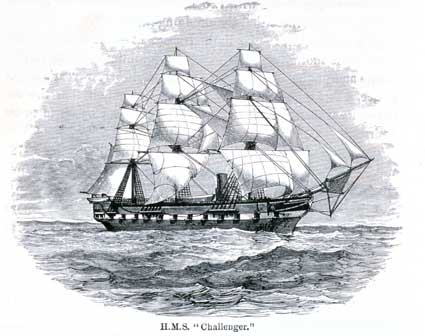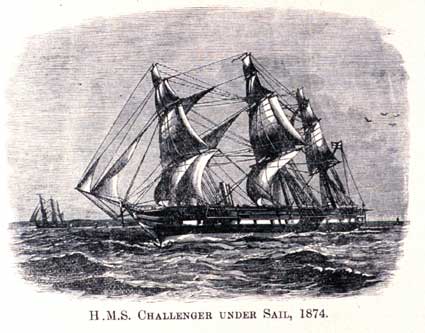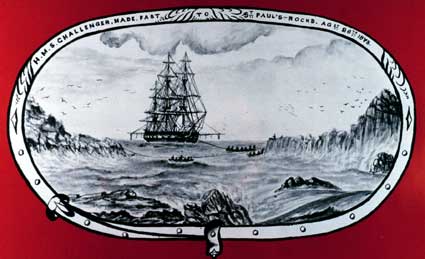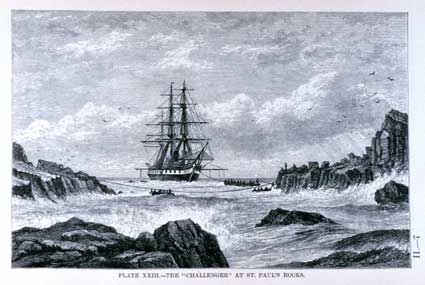

"On February 22nd, at noon, the ship was about 70 miles north-east of Point D'Urville, where the great Ambernoh River, the largest river in New Guinea, runs into the sea. The river probably rises in the Charles Louis Mountains on the opposite side of New Guinea, which reach up to the great altitude of 16,700 feet. So large is this river that even at this great distance from its mouth, we found the sea blocked with the drift-wood brought down by it. "We passed through long lines of drift-wood disposed in curves at right angles to the direction in which lay the river's mouth. The ship's screw had to be constantly stopped for fear it should be fouled by the wood. The logs had evidently not been very long in the water, being covered only by a few young Barnacles (Balanus) and Hydroids. Amongst the logs were many whole uprooted trees. I saw one of these of which the stem was two feet in diameter.
"The majority of the pieces were of small wood, branches, and small stems.....
"Various fruits of trees and other fragments were abundant, usually floating, confined in the midst of the small aggregations into which the floating timber was almost everywhere gathered. Amongst them were the usual littoral seeds, those of two species of Pandanus, and of a Puzzle-seed (Xylocarpus), fruits of Barringtonia and of Ipomoea pes-capri.
"But besides these fruits of littoral plants, there were seeds of 40 or 50 species of more inland plants. Very small seeds were as abundant as large ones, the surface scum being full of them, so that they could be scooped up in quantities with a fine net. With the seeds occurred one or two flowers, or parts of them.
"I observed an entire absence of leaves, excepting those of the Palm, on the midribs of which some of the pinnae were still present. The leaves evidently drop first to the bottom, whilst vegetable drift is floating from a shore. Thus, as the debris sinks in the sea-water deposit abounding in leaves, but with few fruits and little or no wood, will be formed near shore, whilst the wood and fruits will sink to the bottom farther off land.
"Much of the wood was floating suspended vertically in the water, and most curiously, logs and short branch pieces thus floating, often occurred in separate groups, apart from the horizontally floating timber. The sunken ends of the wood were not weighted by any attached masses of soil or other load of any kind. Possibly the water penetrates certain kinds of wood more easily in one direction with regard to its growth than the other. Hence one end becomes water-logged before the other;...
"... The fruits and wood were covered with the eggs of a Gasteropod Mollusc, and with a Hydroid, and the interstices were filled with Radiolarians washed into them and gathered in masses... Two species of Crabs inhabit the logs in abundance, and a small Dendrocoele Planarian swarms all over the drift matter and on the living crabs also. A Lepas was common on the logs.
"Enormous quantities of small fish swarmed under the drift-wood, and troops of Dolphins (Coryphaena) and small sharks (Carcharias), three or four feet long, were seen feeding on them, dashing in amongst the logs, splashing the water, and showing above the surface, as they darted on their prey. The older wood was bored by a Pholas.
Reference: Reid & Chandler, 1933 "London Clay Flora" p20


For further information http://hercules.kgs.ku.edu/hexacoral/expedition/challenger_1872-1876/challenger.html
http://aleph0.clarku.edu/huxley/SM4/Chall.html / http://life.bio.sunysb.edu/marinebio/challenger.html


